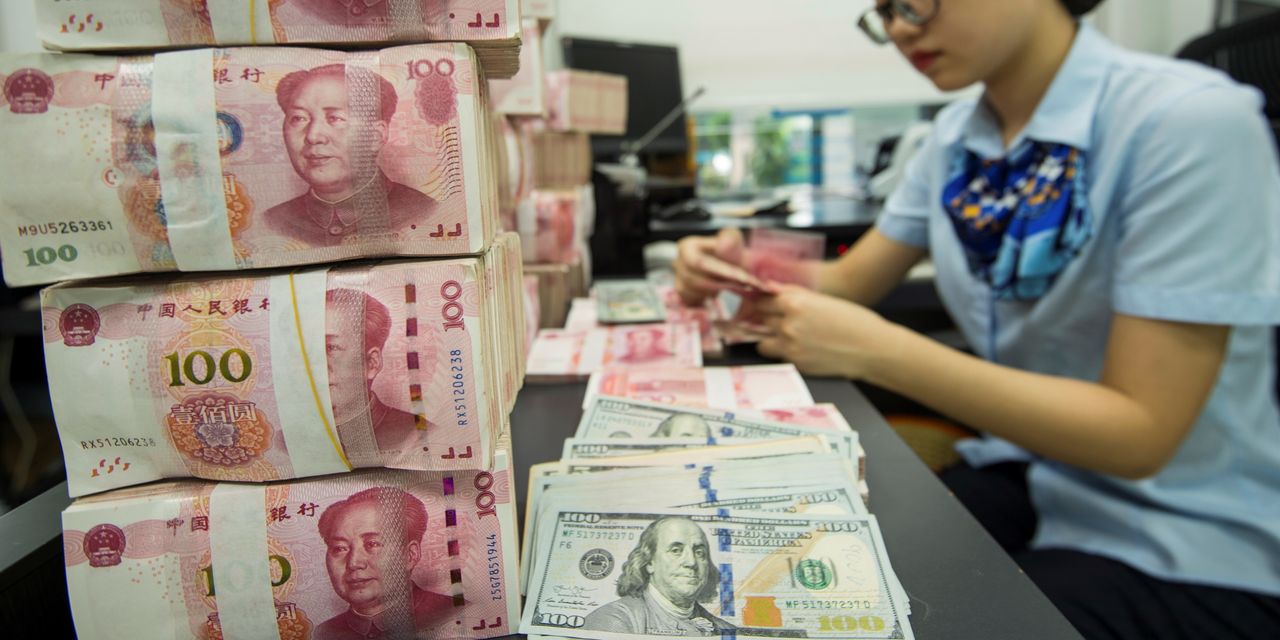The Biden administration is walking a fine line by encouraging U.S. businesses to derisk — diversify supply chains from China — while trying to not antagonize Beijing or limit U.S. commercial opportunities.
Even with China’s many problems — including real-estate debt bubbles, waning investor and consumer confidence and the paradox of a declining labor force with record youth unemployment — China still boasts the world’s second-largest economy.
Read: China’s exports drop more than expected, signaling nagging headwinds
More: IMF boosts China economic growth forecast
China has accomplished parity or superiority in manufacturing process technologies, supercomputers, artificial intelligence, solar panels, electric vehicles (EVs) and batteries. China boasts the world’s largest navy. With weapons such as hypersonic- and carrier-killing missiles, it threatens the U.S. capacity to defend Taiwan and keep critical lanes of commerce open in the South China Sea.
The Biden administration has taken bold steps to shore up U.S. competitiveness in semiconductors, EVs and an assortment of green technologies. But these are expensive, bloat the federal deficit and potentially tax Americans through inflation.
Despite Treasury Secretary Janet Yellen’s denials that the U.S. is not seeking to constrain China’s development, cutting off Chinese exports of leading-edge technologies — such as the machine used to make the most advanced chips — and maintaining the Trump administration tariffs partially serve that objective.
“The Pentagon lacks the resources to definitively deter Chinese aggression in Taiwan and South China Sea. ”
It’s a rework of U.S. diplomat George Kennan’s 1947 “containment” policy — this time with China as the target. Doing so will require non-aligned nations to increasingly chose between China and the West.
Despite upping U.S. defense spending to $858 billion in 2023, the Pentagon lacks the resources to definitively deter Chinese aggression in Taiwan and South China Sea, in no small measure because the U.S. military is tied down defending Europe and maintaining a muscular presence in the Middle East.
Europe can’t afford to wholly defend itself against Russia and support Ukraine and Israel, in part because its economies and national budgets are strapped by adjustments to climate change and the loss of inexpensive Russian natural gas. Moreover, in the wake of record COVID pandemic spending, the European Fiscal Board is pushing EU members to rein in deficits. Failure to comply will force much higher interest rates to contain inflation.
The joint U.S.-European policy of not giving Ukraine the weapons needed to push Russia out of its territory and establish secure borders almost guarantees the war will create a financial drain that goes on for years.
Also pressuring European economies is that U.S. industrial and trade policies have turned protectionist against former friends. That further challenges Europe’s economic growth. In Germany, for example, manufacturers have been forced to relocate operations to China and the United States due to the loss of cheap natural gas from Russia and the attraction of subsidies provided by Chips and Science Act and Inflation Reduction Act.
The U.K., America’s strongest and most steadfast ally, banked on a free trade agreement with the U.S. to complement its free-trade arrangement with the EU. But the Biden administration appears convinced that all new free trade agreements are a threat to America’s middle-class.
In Asia, similar reasoning keeps the U.S. out of the Trans-Pacific Partnership, which only serves to push Malaysia and Indonesia closer to China.
The U.S. must abandon its one-size-fits-all approach to trade and industrial policy. Instead, Washington should embrace free trade with the U.K. and Europe and re-enter the TPP, while accelerating the process of becoming less dependent on China.
The U.S. could require licenses to import from China that gradually rebalance trade, for instance. U.S. imports from China exceed exports by a ratio of 2.3-to-1. The U.S. Commerce Department could auction import licenses to lower that ratio to 2-to-1 for 2024 and gradually reduce the ratio to 1-to-1 over several years. Licensing revenue could be used to support industrial policies aimed at developing supply chains in industries where China is now the dominant supplier.
The rising cost of imports from China would also accelerate the growth of U.S. imports from alternative sources in Asia and strengthen their ability to purchase U.S. products through the TPP. This would slow China’s growth and shift that progress to U.S. industries and more friendly nations. That is what derisking trade should be all about.
Peter Morici is an economist and emeritus business professor at the University of Maryland, and a national columnist.
Plus: The world needs Biden and Xi to lead, even with U.S.-China relations on the edge
Also read: Financial markets worldwide now face a higher chance of extreme events, El-Erian warns
Read the full article here







